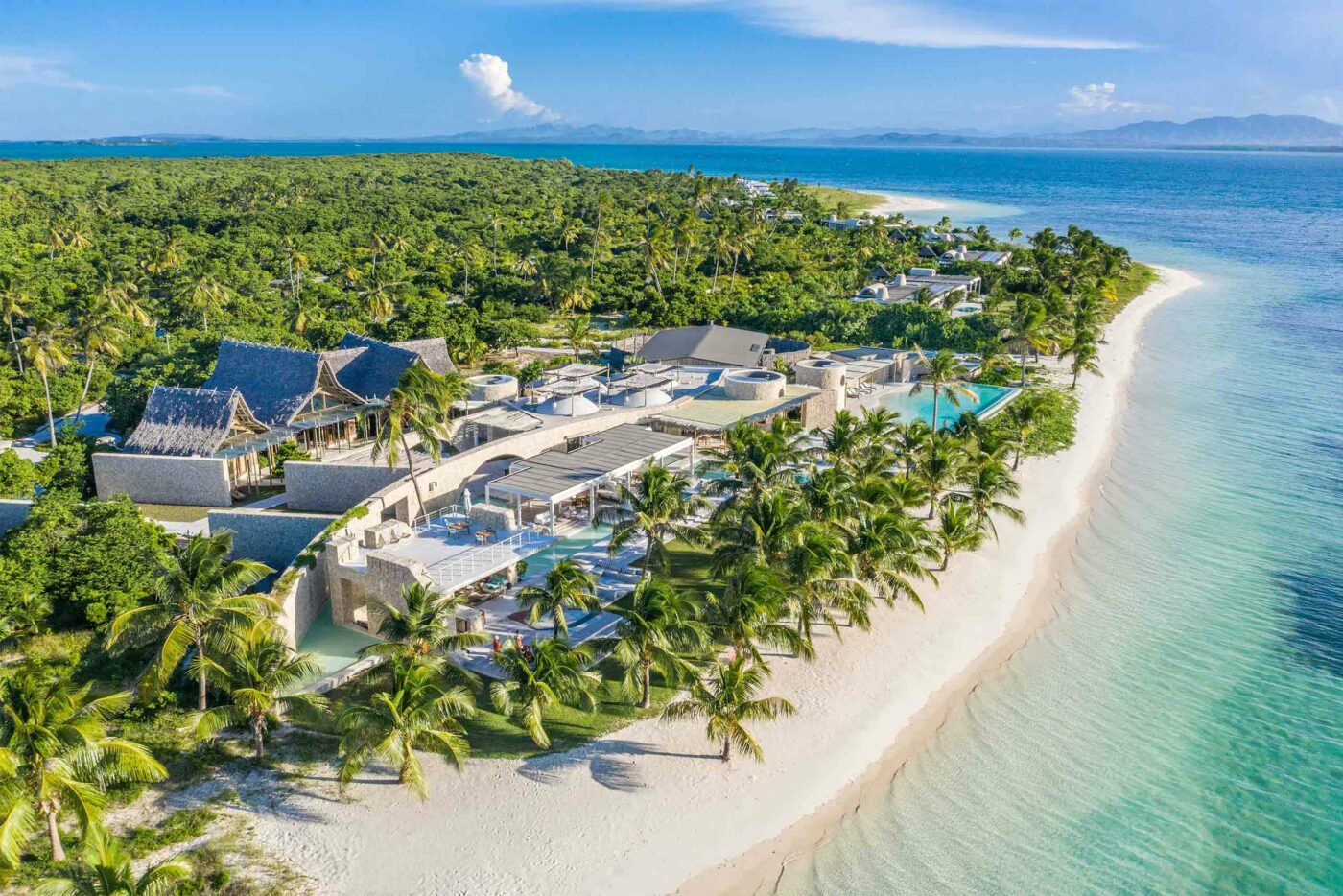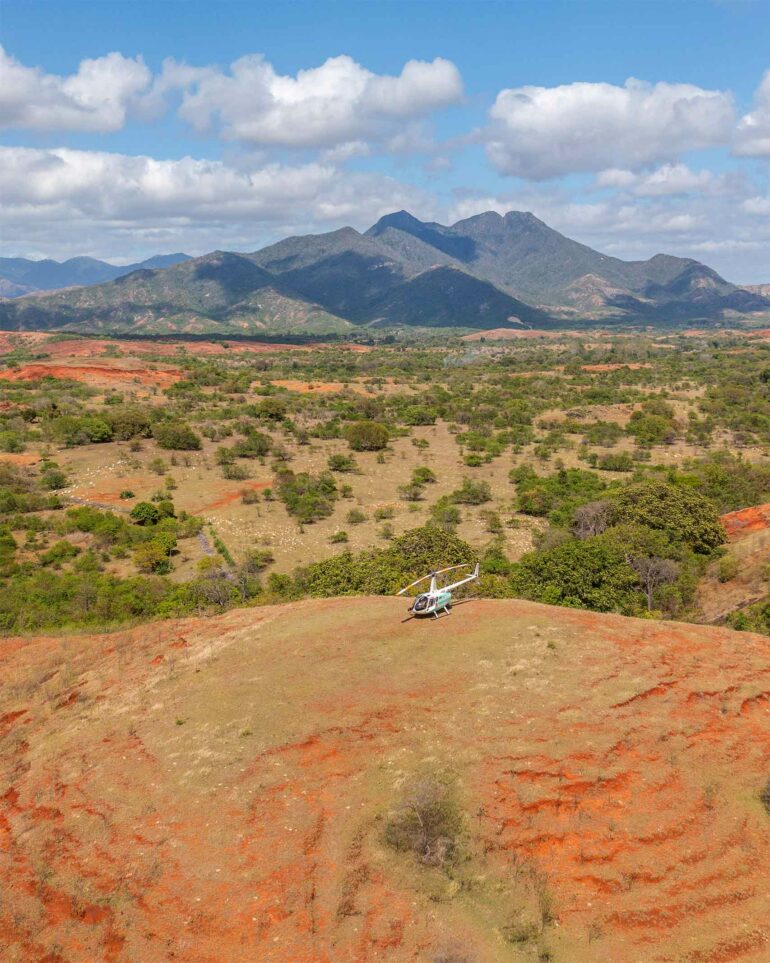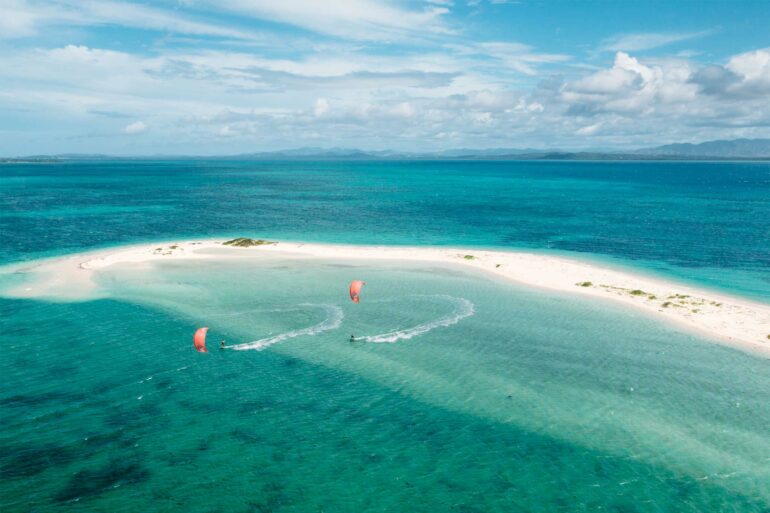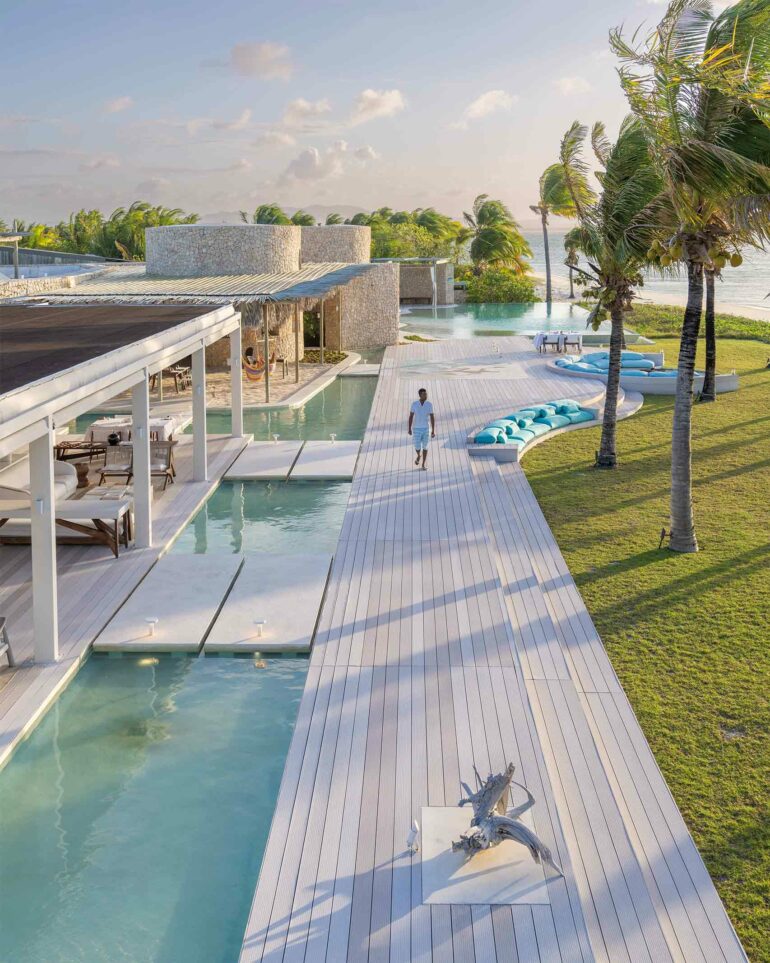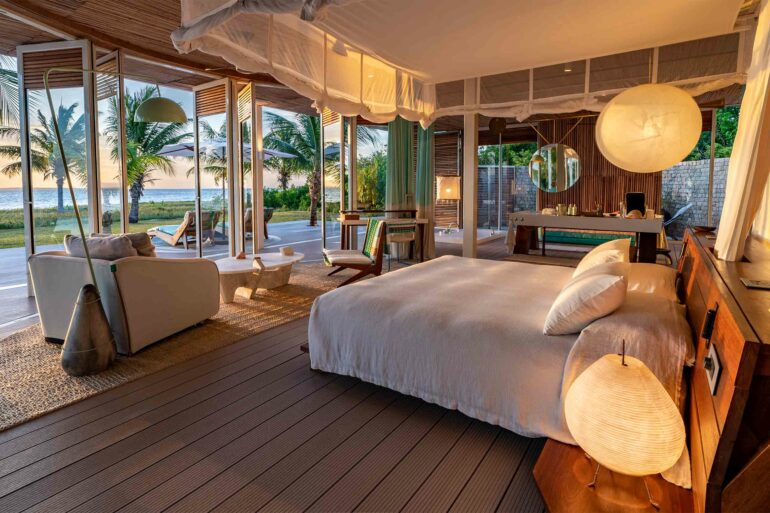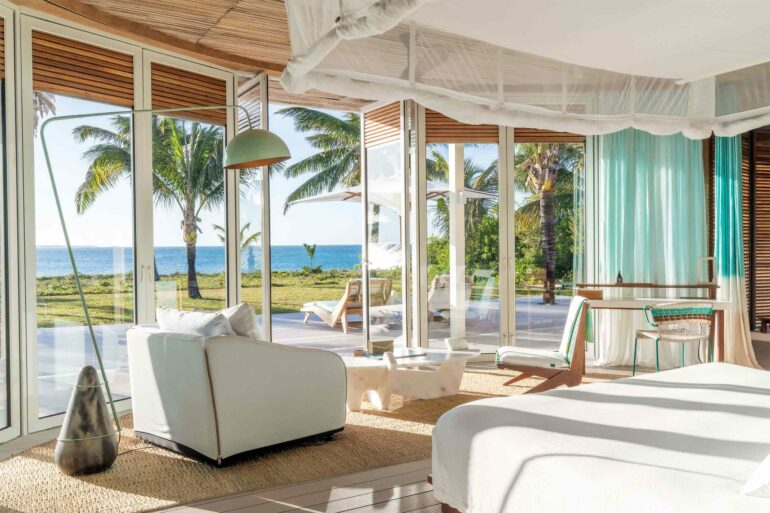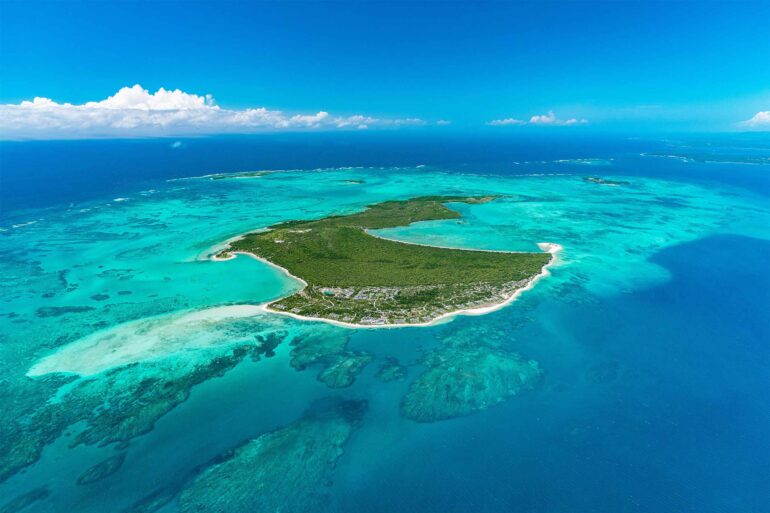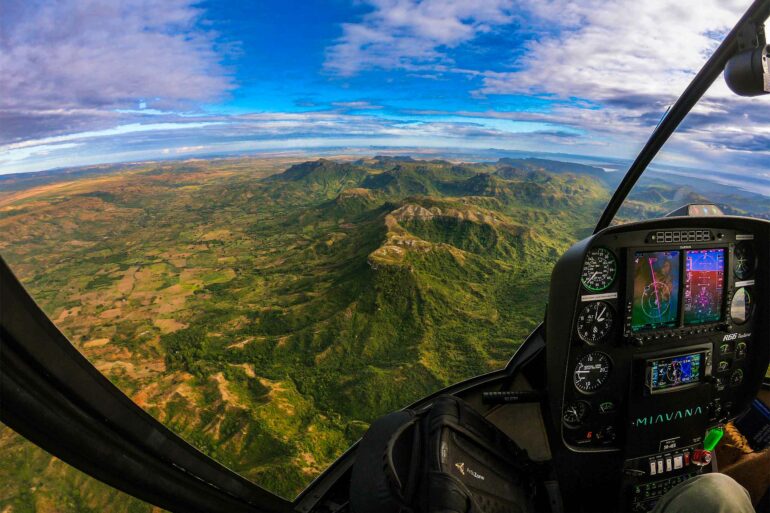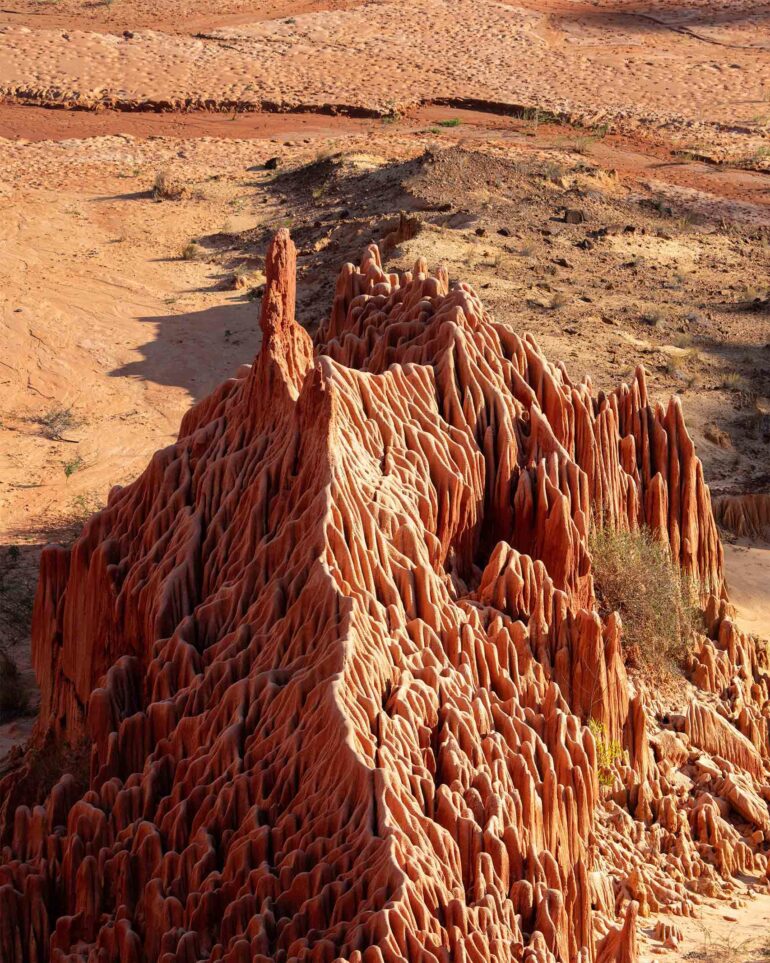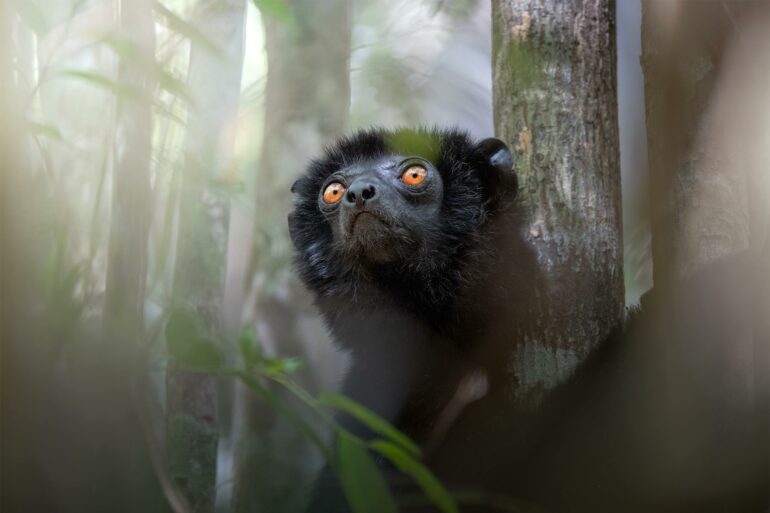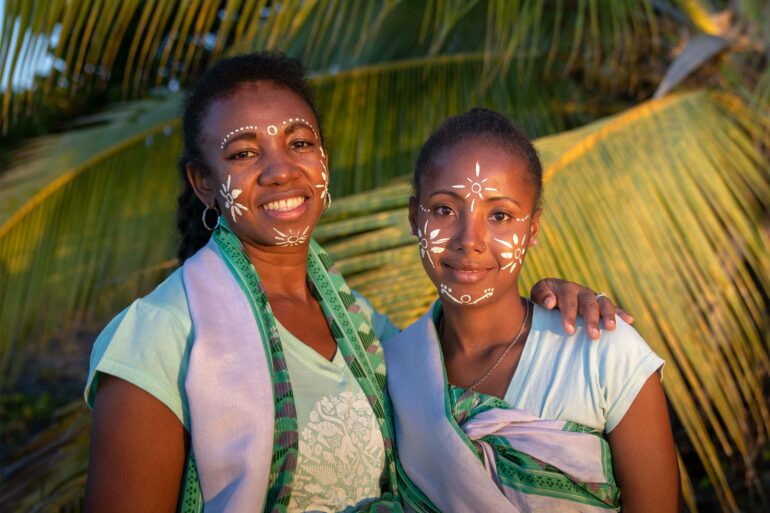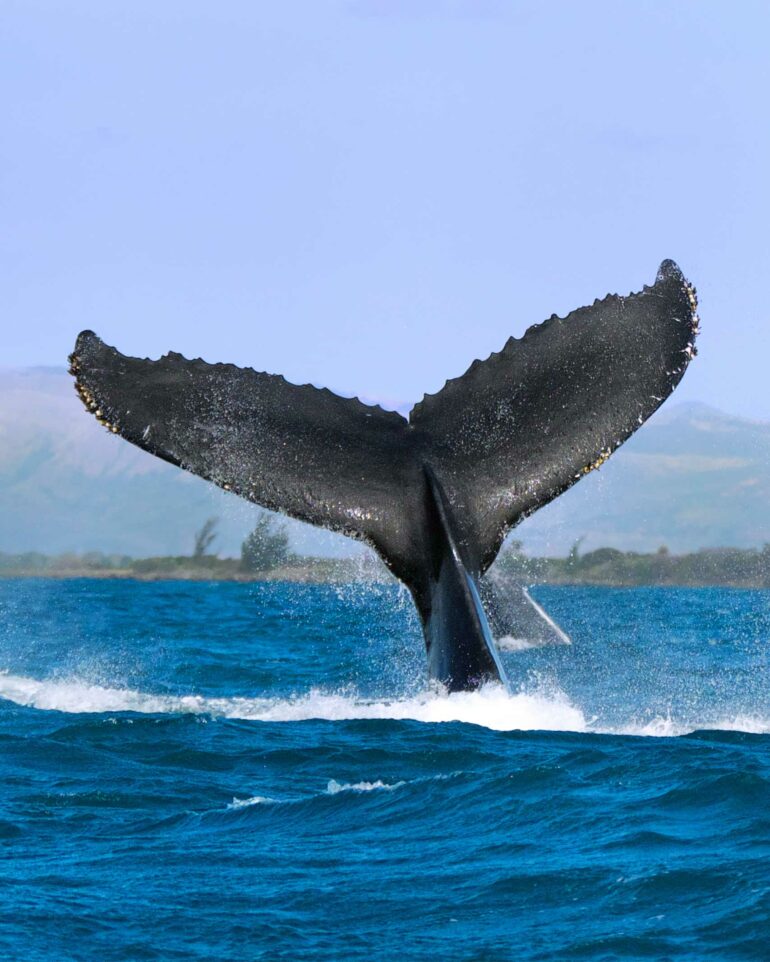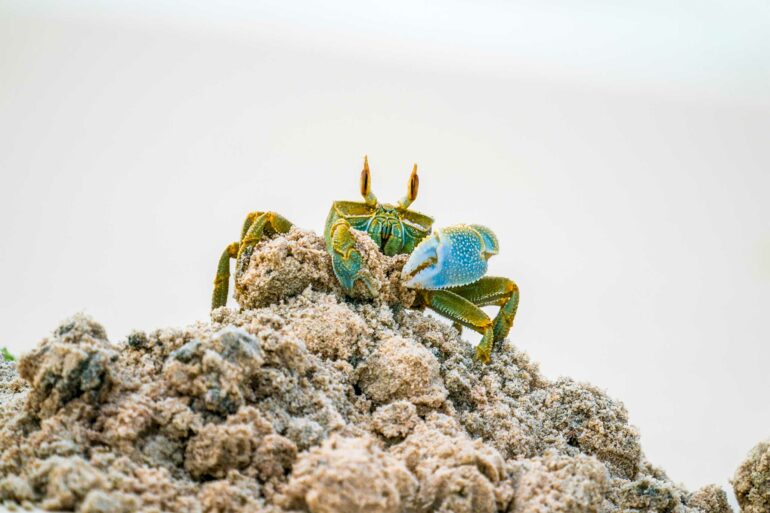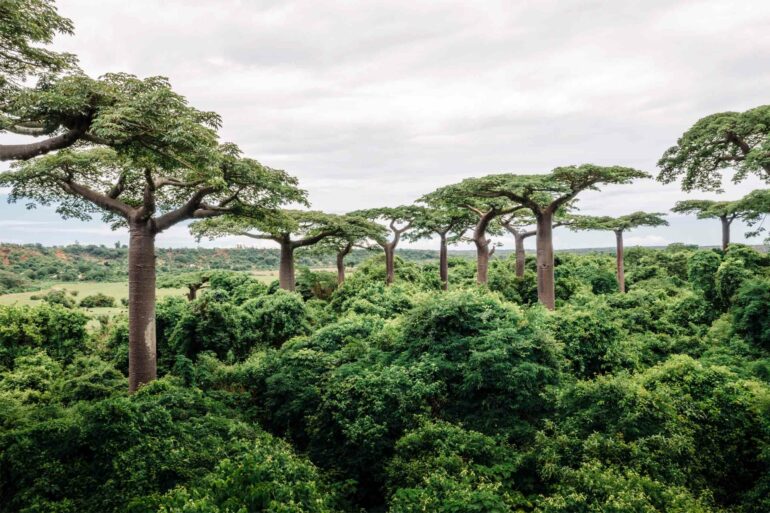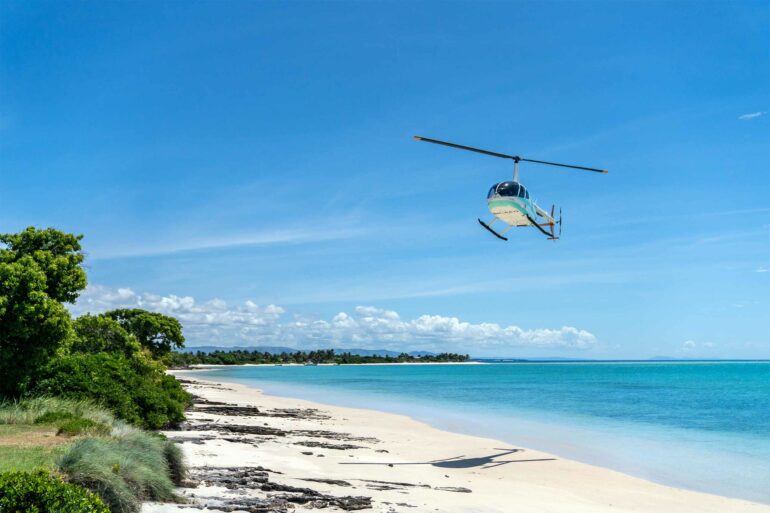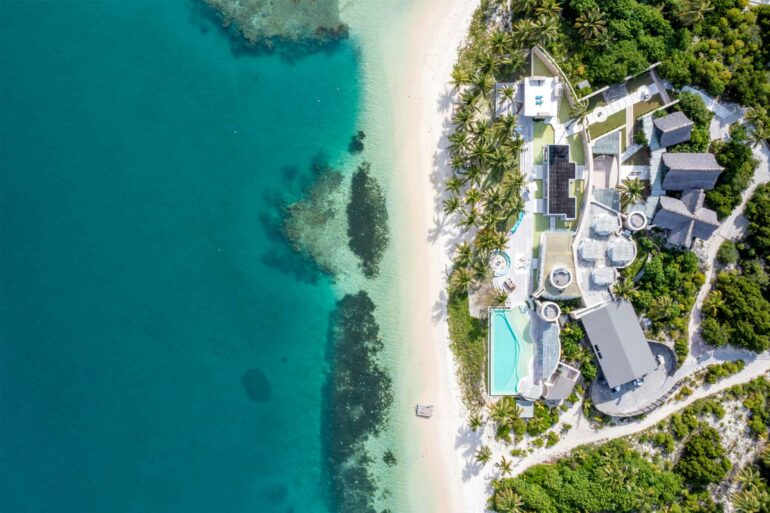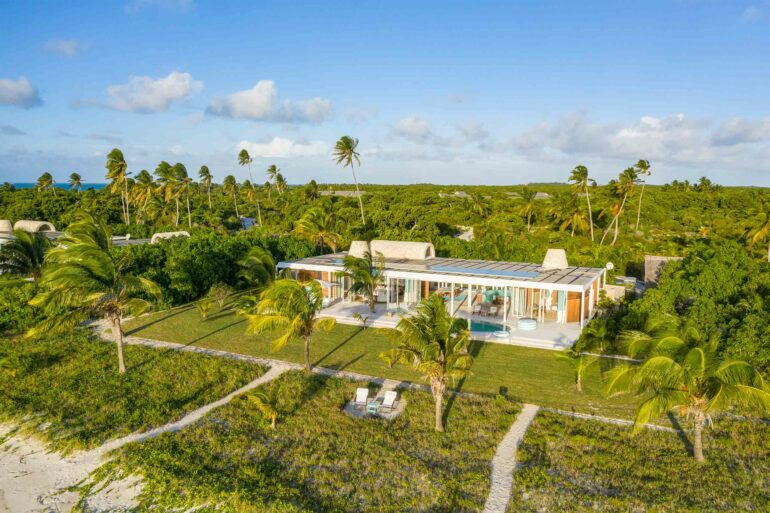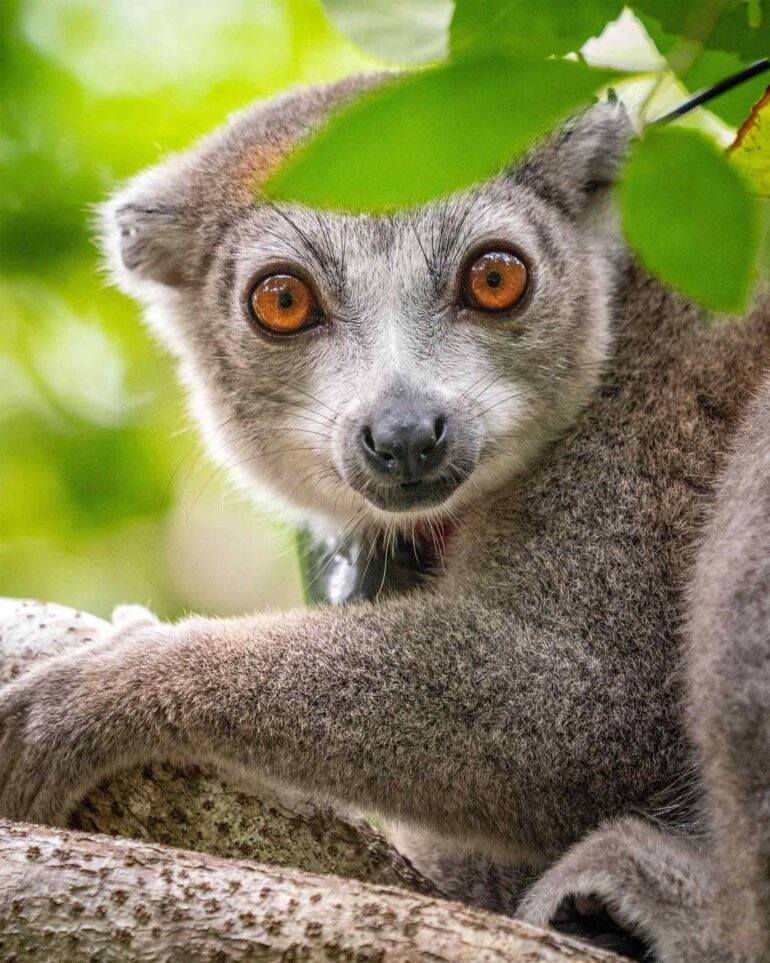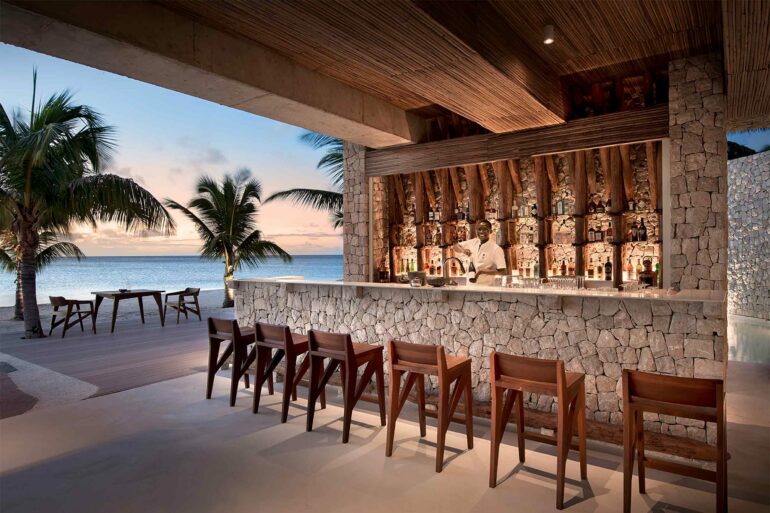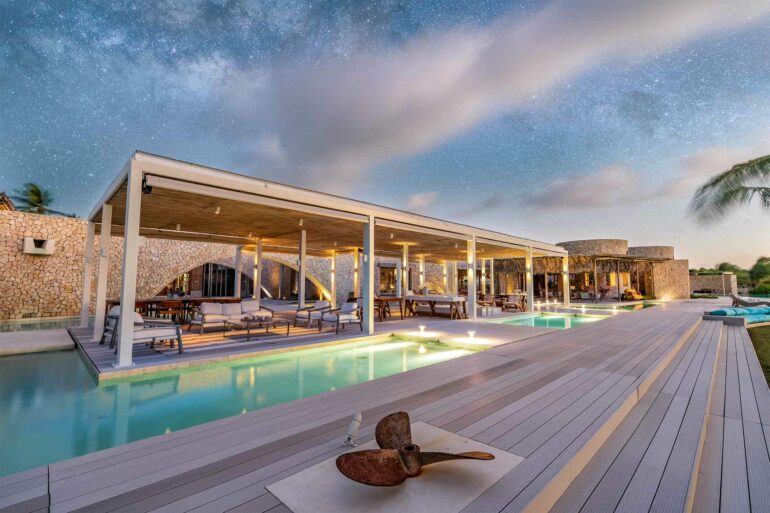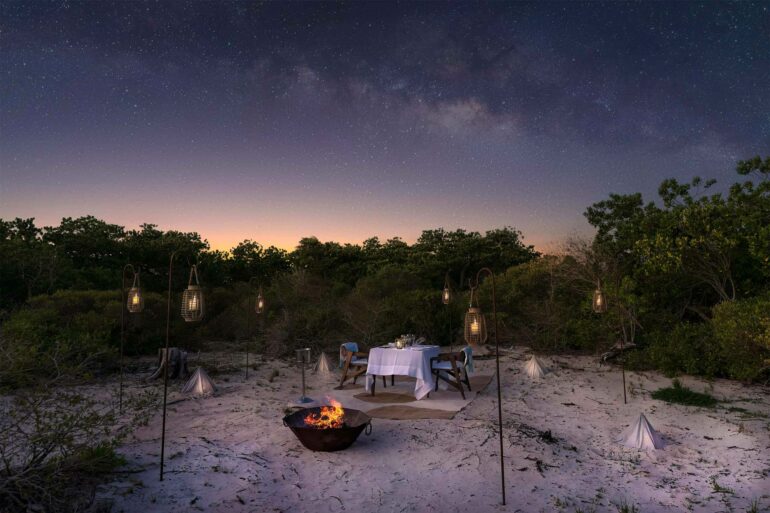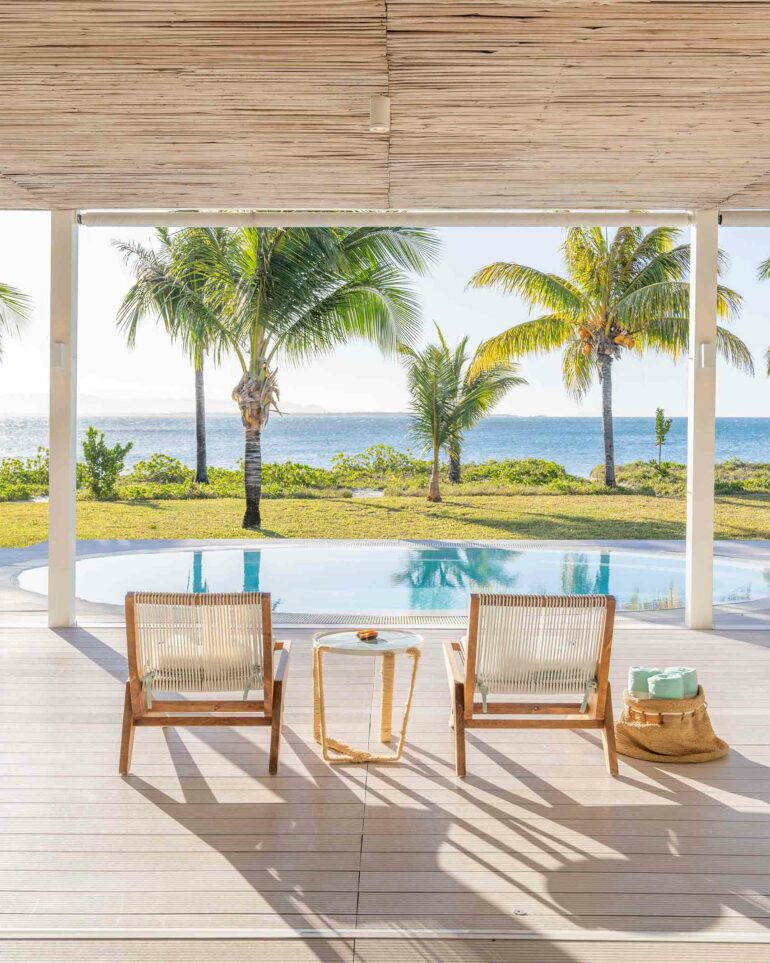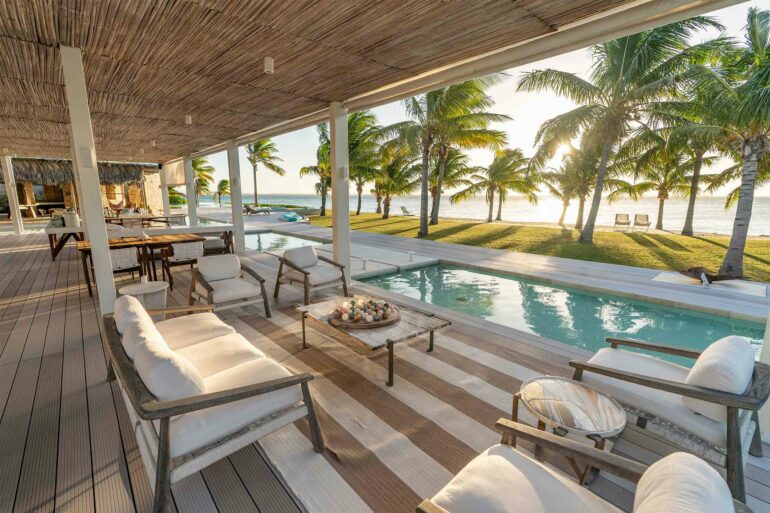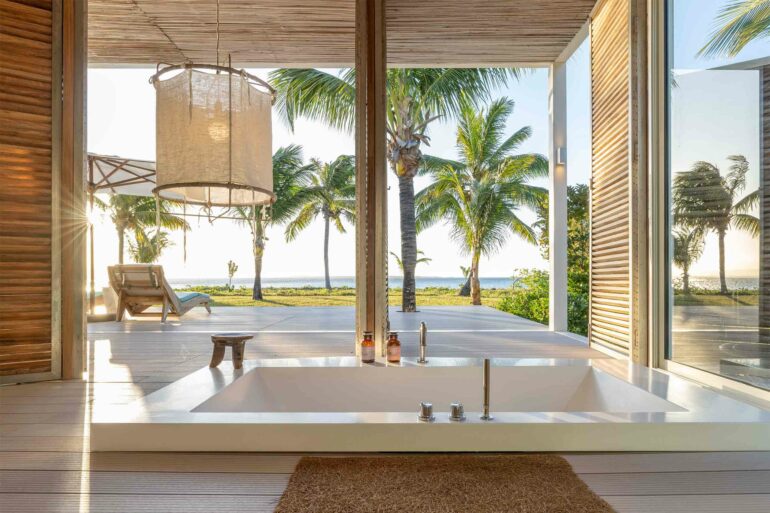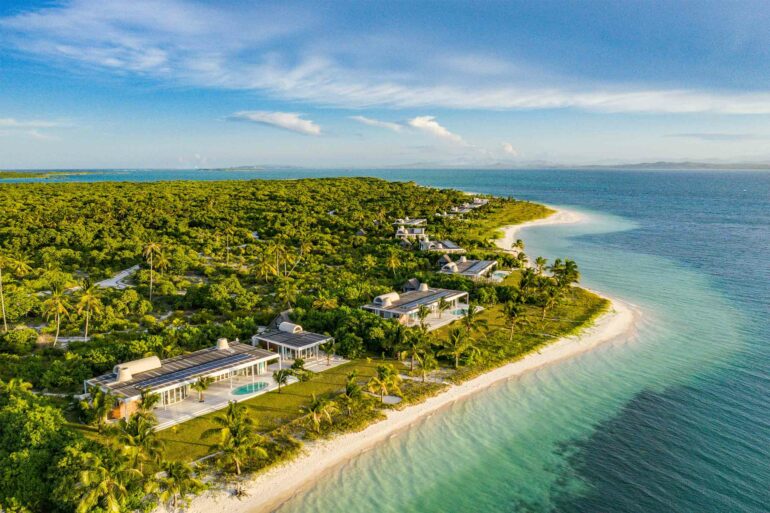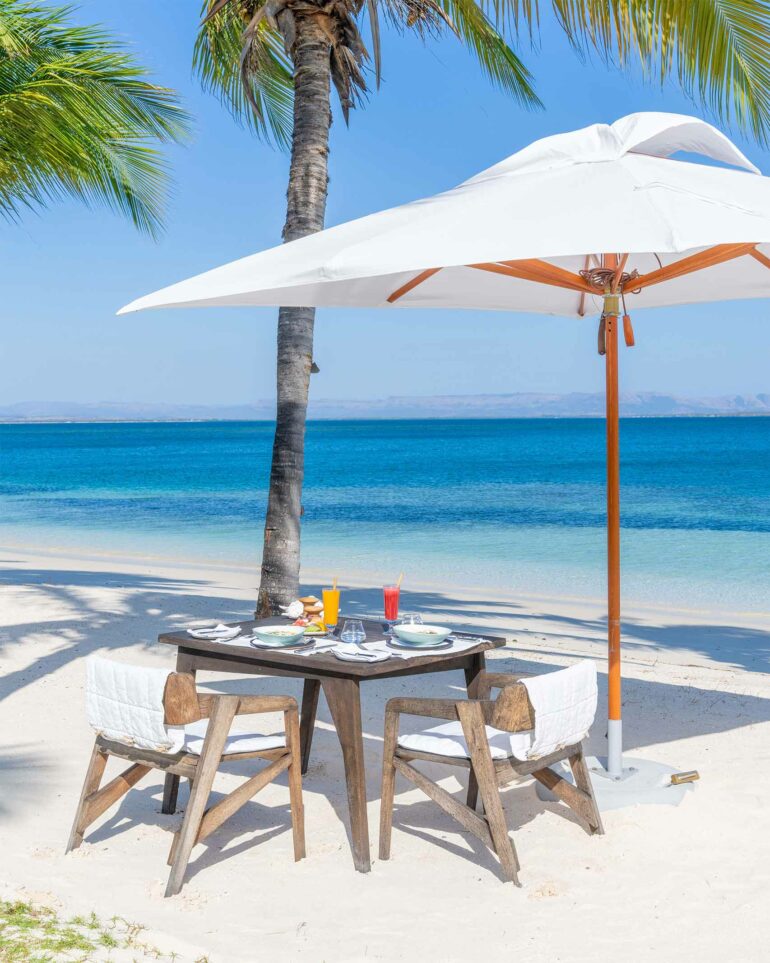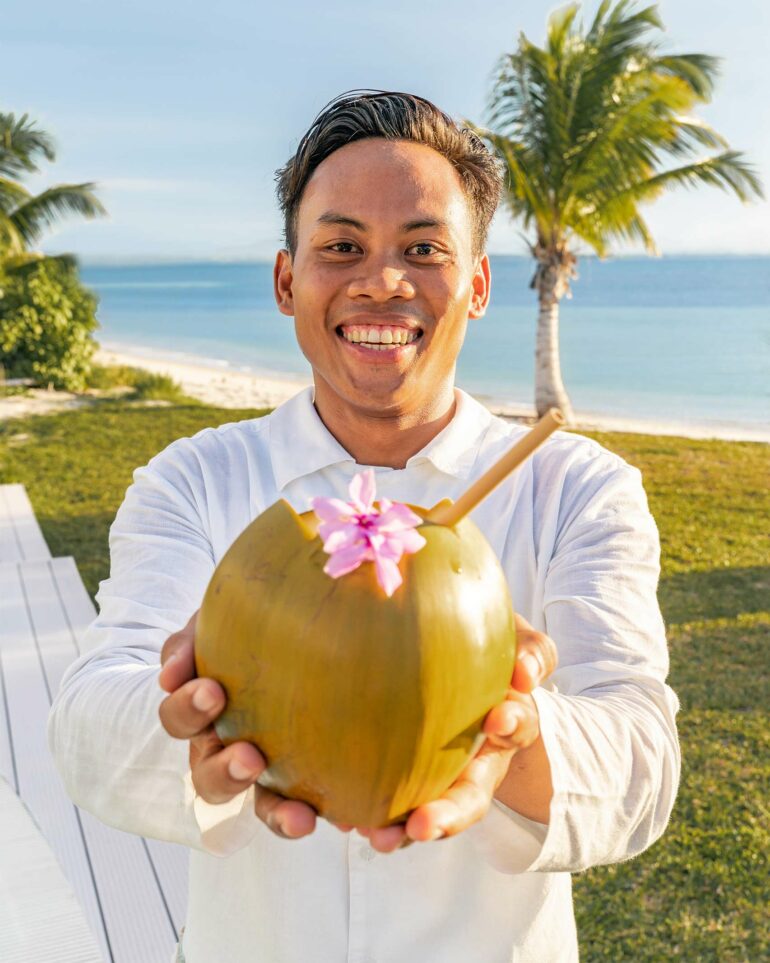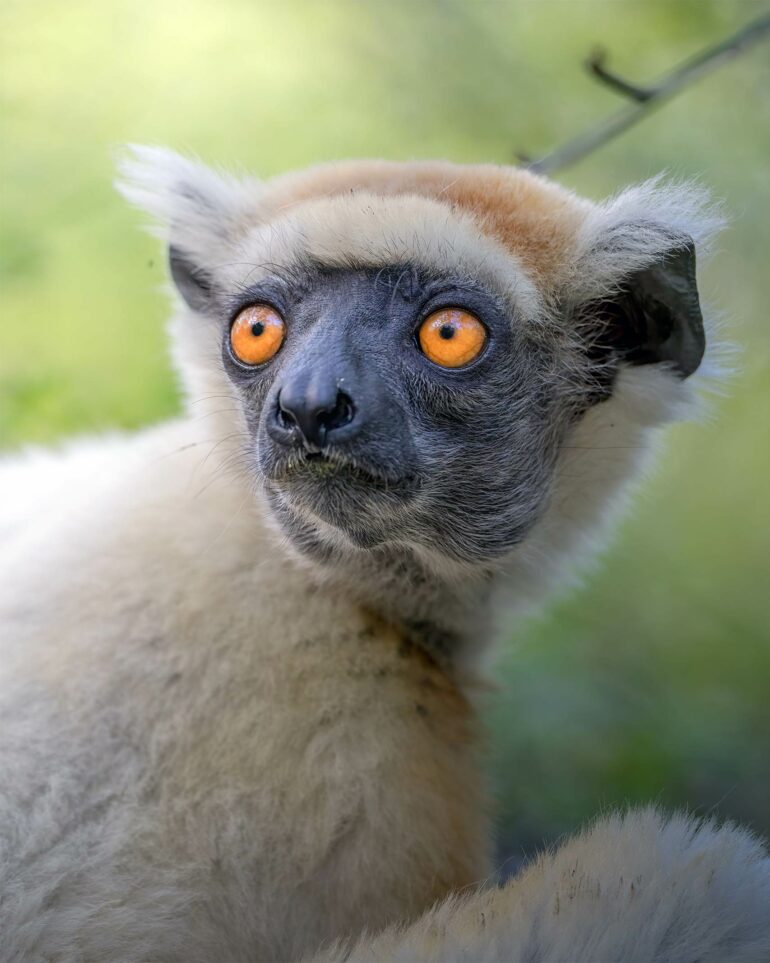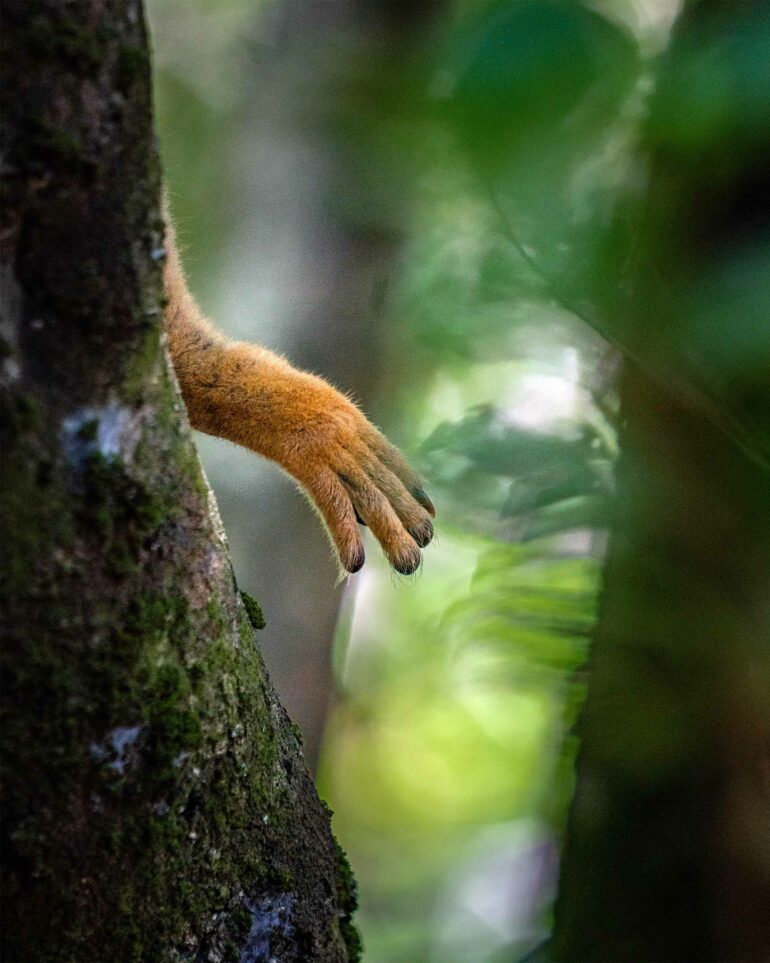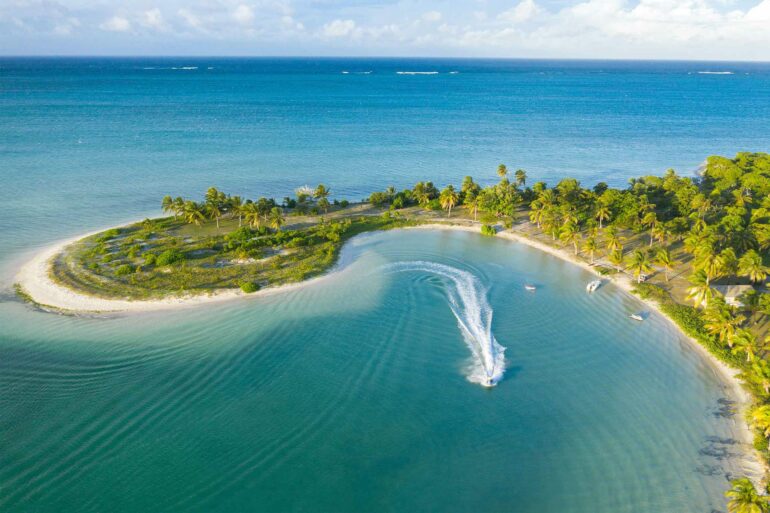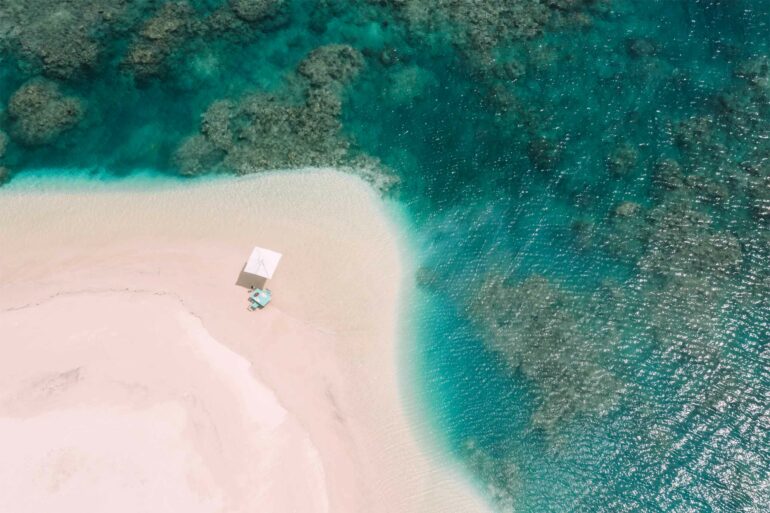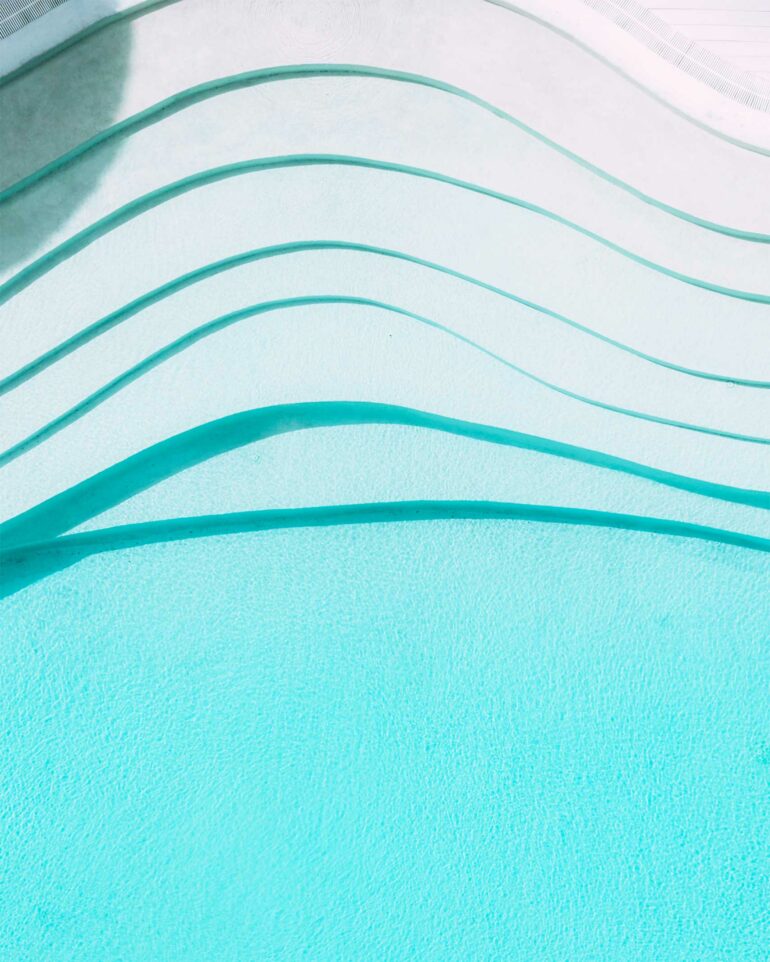Sometimes, to access a true travel gem, you have to go big or go home. Or, if you’re really lucky, both – when going big means undertaking the complicated journey to Madagascar, and making Miavana, a game-changing island resort in the Indian Ocean, your home, albeit just for a while.
The IATA location-identifier for the remote Arrachart international airport in Antsiranana (formerly Diego-Suárez), Madagascar, spells out the foreboding geocode DIE – perhaps not something I really need to see on my luggage as I board the Learjet, bound for the unknown. But, with the view from my window slowly revealing what hitherto has been ‘mysterious’ Madagascar as we come in to land at the northern tip of the world’s fourth-largest island, any trepidation melts away.
Clouds part like puffy theatre curtains to reveal an archipelago of small islands set in the hypnotic Indian Ocean. Shimmering with an impossibly aquamarine brilliance, it fascinates my magpie eyes.
Since the pandemic subsided, footloose and far-flung ‘isolation vacations’ have been the in thing. I have certainly developed an appetite for unique journeys and a desire to break free from traditional expectations of luxury travel, particularly when it comes to Indian Ocean experiences, which are often sedate. I chose this trip because it promised an immersive voyage anchored in adventure and discovery, with luxury credentials still intact.
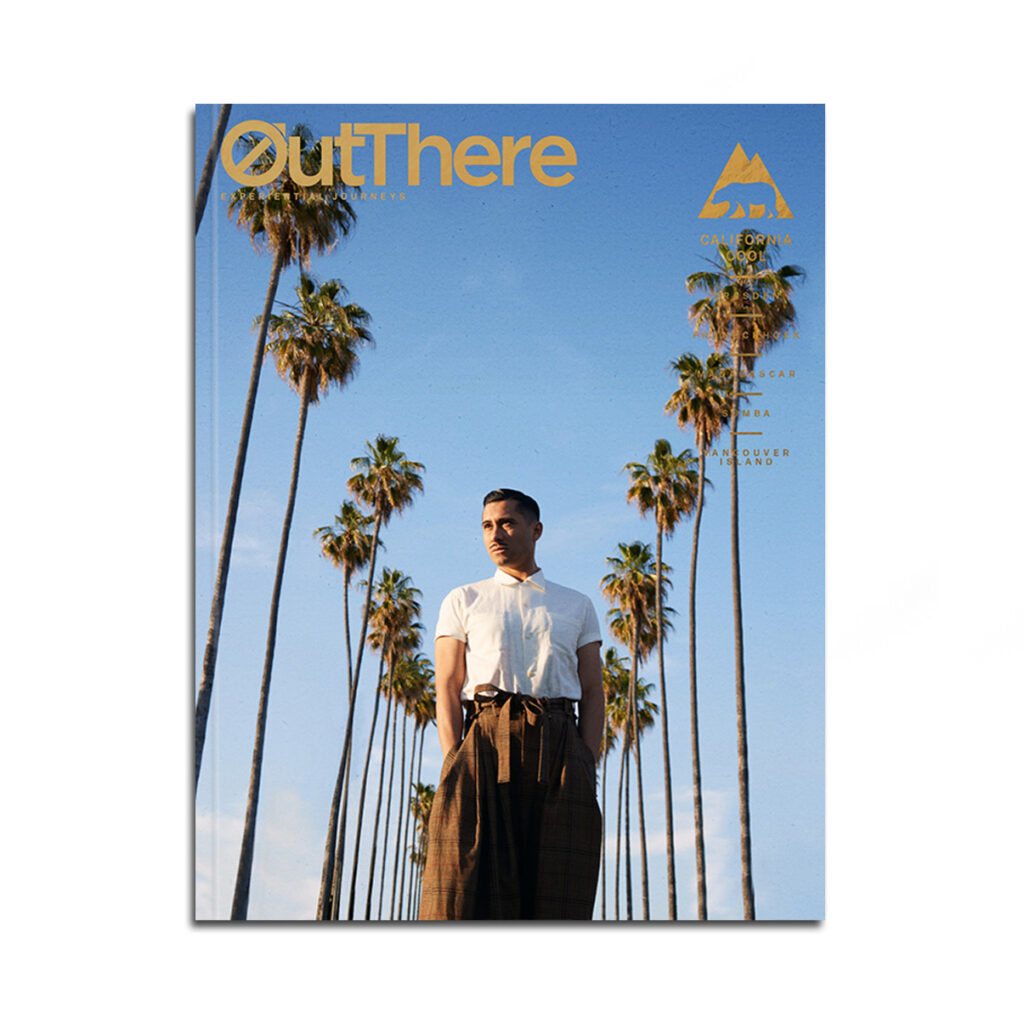
This story first appeared in The California Cool Issue, available in print and digital.
Subscribe today or purchase a back copy via our online shop.
Accordingly, my already long journey to Madagascar does not end at Antsiranana. Waiting for me is a private Robinson R66 Turbine helicopter, bearing the white-and-turquoise livery of my final destination – the upscale island escape of Miavana by Time + Tide.
Coasting over land and sea makes for an incredible arrival experience, a bird’s-eye view over rugged terrain, dense jungle, kite-surfing beaches and epic lagoons. Each 40 spellbinding minute of flight takes us further from any notion of ‘civilisation’. My excitement builds as a crackle comes over the helicopter radio: “Miavana ATC, over. Welcome, home,” says the voice at the other end. And just like that, the island of Nosy Ankao appears, glowing amber in the sunset.
Miavana is set on a 2,500-acre castaway paradise that is the largest island in a private archipelago of five, just off Madagascar’s northeastern coast. The family-owned initiative was conceived by South African private-equity financier Thierry Dalais, and he and his team spent four years constructing the resort, with sustainable design as its guiding focus. Architects Silvio Rech and Lesley Carstens were tasked with creating the haven, and the result is a resplendent expression of classic Malagasy craftsmanship, brought up to date with contemporary panache, natural and recycled materials, and an eye-catching mix of urban, modern and minimalist design, alongside creative landscaping and a dash of feng shui.
Even to this seasoned traveller, there’s an indescribable something about the way energy flows through the property, and the harmony between stone and sky, wind, water and whitewashed minimalism is undeniably special, adding up to a beautiful, escapist adventure-island playground with a unique soul.
Accommodation consists of 14 spacious (620 sq m-/1700 sq ft-plus) seafront one-, two- or three-bedroomed villas. Lower-numbered villas face east – perfect for early birds who want to watch the sunrise; sunset lovers should ask for a higher-numbered address. Their design is underpinned by delicate craftsmanship, with generous use of local timber and stone, thatched roofs, and ceilings woven from bamboo and palm leaves. Indoor bathrooms have conical roofs, with a hole at the top for gazing at the clouds or stars, which sparkle with force in the dark nights here.
“If ever it were possible to tire of Nosy Ankao, Johnson can arrange trips to the other four islands – especially popular are private castaway picnics or barbecues and snorkelling trips. I take the short boat ride to Nosy Manampaho, where a breathtaking secluded beach ensures sandy toes and a sun-kissed nose”
In-room, the look is quintessentially Malagasy, with liberal use of white and turquoise, solid-wood furniture and sail-canvas screens. Floor-to-ceiling patio doors bring outdoors and indoors seamlessly together and remain mostly open throughout my stay. I drift to sleep to the sound of crashing waves. A unique aeration system cools only the area around the bed, leaving the rest of the villa unairconditioned – an environmentally conscious choice – but the ever-present sea-breeze keeps the temperature pleasant. It also minimises the presence of harmless bugs – those, that is, that elude my butler Reve’s tireless dedication to keeping them out. A sundeck – fronting the beach and ocean – runs the length of each villa, and features a private pool.
Elsewhere, resort living is luxurious. Breakfast on the beach is a delight, with everything from lobster omelettes and Malagasy eggs Benedict, to tropical fruit and nasi goreng on the menu. The last item is not only a nod to the island’s past settlers, but also to its new ones – many of the highly experienced team come from Indonesia.
They work alongside locals recruited through the Time + Tide Foundation community employment programme, and the friendly, attentive service is exceptional here.
Other meals also dazzle – stand-outs being a feast of beautifully cooked Malagasy delicacies and a barbecue under the stars, serenaded by the dulcet voice and guitar-strumming of the island’s own experience manager Johnson, a proud Malagasy who doubles up as naturalist, historian, kite-surfer and all-round good-time guy.
He and his sidekick Hardy (a Time + Tide Foundation scholarship recipient) are in charge of excursions. From the comprehensive activity centre, we indulge in paddleboarding, watersports and seagoing experiences of all kinds. The island has many secluded beaches to hike, sunbathe or picnic on, and Madagascar is one of the world’s kite-surfing capitals. There’s even a conspiracy (yes, that’s the collective noun) of lemurs, thanks to the Time + Tide Foundation’s monitoring and conservation efforts, one of many initiatives including turtle and marine conservation, tern research and reforestation.
Back on terra firma, I take a tour by all-terrain vehicle to discover the island’s history as a lighthouse station. Still standing, the original 1910s edifice offers incredible views of the island and beyond. Stopping at a village, I down a beer in a bar, and enjoy snacks prepared by local women.
If ever it were possible to tire of Nosy Ankao, Johnson can arrange trips to the other four islands – especially popular are private castaway picnics or barbecues and snorkelling trips. I take the short boat ride to Nosy Manampaho, where a breathtaking secluded beach, home to thousands of sooty terns, ensures sandy toes and a sun-kissed nose. Excursions further out include scuba diving and deep-sea fishing, and I find something very primal and exhilarating about reeling in my first trevally, a trophy fish here.
“My stay in Madagascar proves to me that escapist time out can encompass adventure and learning – worth noting, given how hard it is to get here compared with, say, the Maldives or Mauritius”
But, of all the activities on offer, heli-touring over ‘mainland’ Madagascar’s unique topography is my favourite, made yet more unforgettable by having Johnson and an expert pilot as my guides. We float over breathtaking landscapes that underline just how diverse and remote Madagascar is. From vibrant emerald ocean reefs, we cruise upriver over mangroves and magnificent floodplains and rivers. We take in misty, forested plateaus and soar over jaw-dropping karst, with cave systems and limestone spires protruding from the landscape like a bed of nails. We hover over the red cliffs of Tsingy Rouge and chase powerful waterfalls. But nothing can cap flying over – almost through, thanks to our pilot’s skill – a forest of lush, ancient baobab trees, rising proud from the dark canopy. This, Johnson tells me, is a Miavana exclusive.
Between July and October, helicopter tours can also include humpback-whale spotting. Heli-kiting is another option, dropping off expert kitesurfers at otherwise unreachably secluded beaches. In fact, by helicopter almost anything is accessible, including mangrove tours and deeper on-foot exploration of stunning natural wonders, such as Ankarana National Park. On one outing, we land at Black Lemur Camp, in the Andrafiamena Andavakoera Protected Area, to spot – among many other kinds of wildlife – Perrier’s black sifakas. With our guides’ help we find different species of these beautiful, wide-eyed creatures in all their glory, and I feel blessed knowing that I’m one of just 300 visitors a year to see them here.
Madagascar doesn’t teem with wildlife like mainland Africa. Much of its megafauna (including 150kg/330lb lemurs the size of gorillas and 3m/10ft tall elephant birds) has been driven to extinction, and 90 per cent of forest habitat has been lost since humans arrived over 2,000 years ago. I learn these dispiriting facts in a one-to-one with Johnson at Miavana’s own natural and human history museum, where he gives talks about the country’s geography and history and how the Time + Tide Foundation gives back.
My stay in Madagascar proves to me that escapist time out can encompass adventure and learning – worth noting, given how hard it is to get here compared with, say, the Maldives or Mauritius, and the considerably higher cost. But during my time at Miavana it has delivered exceptional value, and I am certain that, for the Indian Ocean, the resort is nothing short of a game-changer.
Uwern travelled with Red Savannah, which offers a seven-night package at Miavana by Time + Tide in a one-bedroom villa with all meals, selected premium wines and champagnes, top-shelf spirits, laundry, a selection of water- and land-based activities, and return helicopter transfers from and to Nosy Be airport.
www.miavana.com | www.redsavannah.com
Photography by Andrew Macdonald and courtesy of Miavana


